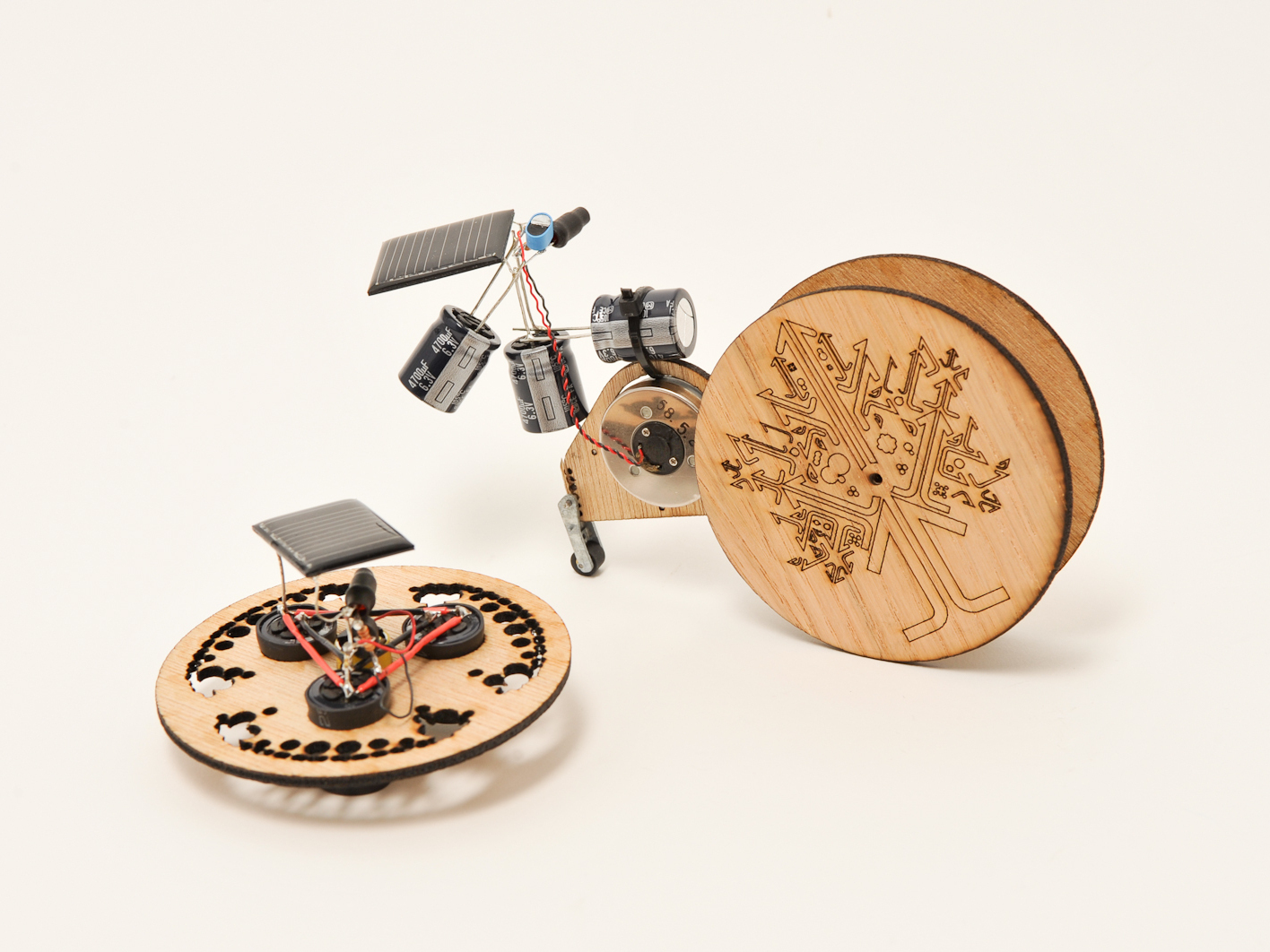BEAM robot building techniques allow you to build fun and simple little robots with lots of room for stylizing. BEAM robots can move anywhere from a fraction of an inch to a couple of feet, depending on how big their capacitors are. You can also use batteries. For these two projects, we’ll use what’s known as a “solar engine” (Type 1 “FLED” variety), some store-bought and scavenged electronics, and laser-cut and gold-leafed wheels to build some stylin’ little Solar Chariots. Let the build begin!
BEAM is a type of robot design that allows you to create little robot/robot-like critters and vehicles mainly using basic analog components (resistors, transistors, capacitors, diodes, LEDs). The challenge is to try and get as much robot-like behavior using these components. BEAM is an acronym for “Biology, Electronics, Aesthetics, Mechanics” and these four elements serve as inspiration in all BEAM design. You can find our more about BEAM on our BEAM robot page.


